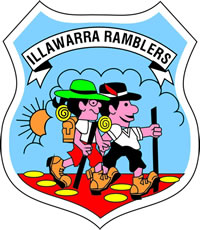The same principles of safe practice apply to all activities. We need to:
- Be capable of doing the activity
- Have proper equipment including a first aid kit
- Stay with the group
- Be aware of where others are, especially those behind us.
By not complying with the above, everyone in the group is affected and undue stress is placed on the leader.
The following guidelines apply to cycling but in some aspects are also relevant in principle to hiking and kayaking.
Equipment and apparel are important:
- Roadworthy and correctly fitted bikes.
- Helmets (mandatory).
- Highly visible clothing.
- Covered footwear, sunglasses (or other eye protection) and gloves.
- Water, sunscreen.
When on cycle paths:
- Look out for pedestrians, children, dogs and other cyclists.
- Ride abreast only when safe to do so.
- If the path is busy, stay in single file and as a general rule stay on the left.
- If approaching others, especially from behind, ring your bell and slow down before passing.
- Be cautious when approaching narrow sections, gravel, bridges or blind bends.
- Watch the edges of the path. If you run off, stay off until you can get back safely.
- Be careful in wet weather or if the path surface looks slippery, apply brakes gently.
- Take corners slowly, brake before the corner to avoid your wheel locking or sliding on gravel or slippery areas.
- When cycling downhill, use the back brake to control your speed. Use the front brake only with the back brake already on. Keep your weight over the rear wheel and watch out for any obstacles.
- When approaching hills get into a low gear before you start climbing. If it’s too hard, walking is alright.
When on the road:
- Cyclists have the same rights and responsibilities as other road users.
- There are also specific road rules for cyclists.
For more useful tips and information see the Bicycle Rider Handbook on the Roads & Maritime Services website: http://www.rms.nsw.gov.au/roads/bicycles/safety-rules/index.html
